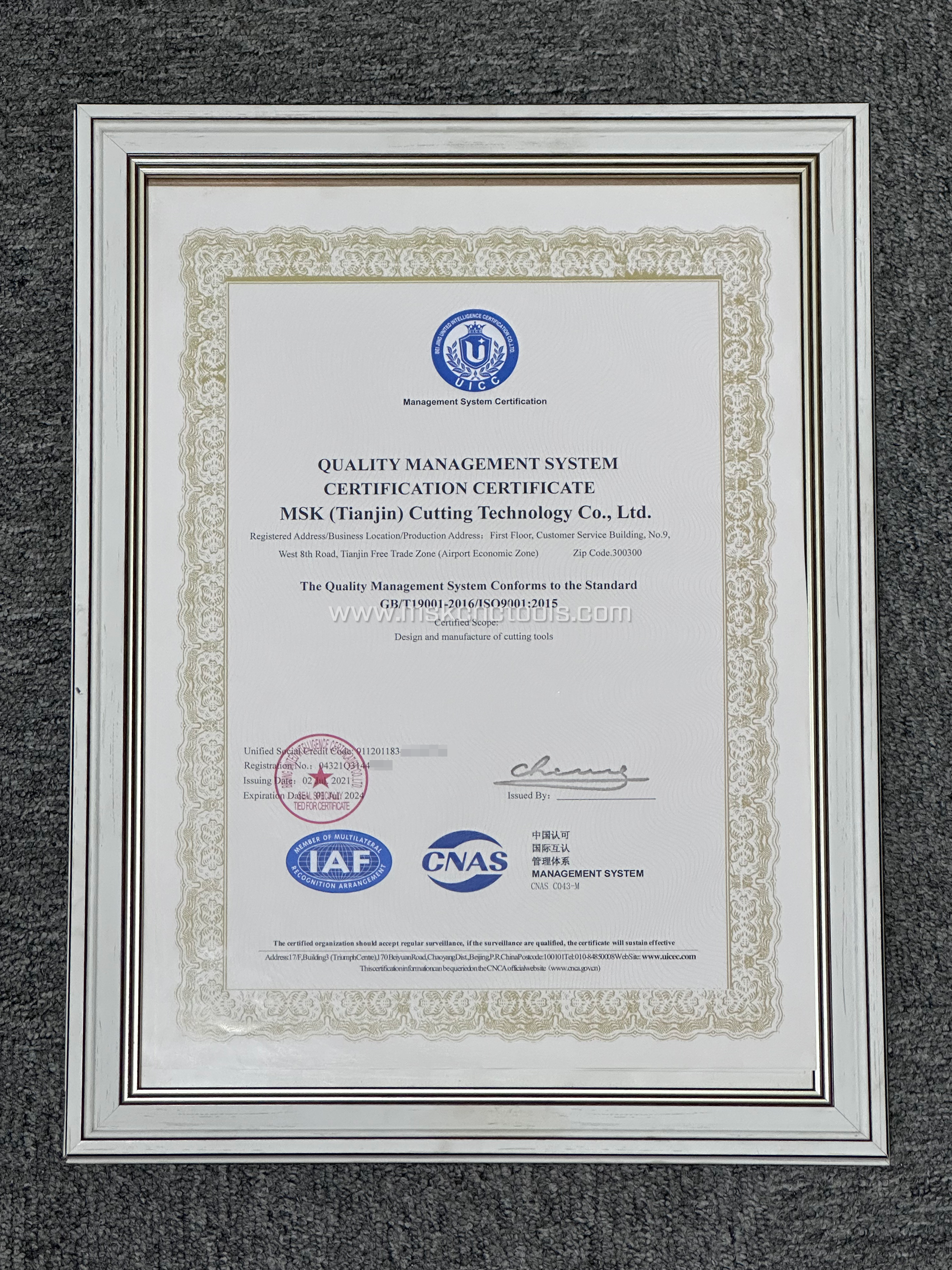What customers said about us







FAQ
Q1: Who are we?
A1: MSK (Tianjin) Cutting Technology Co., Ltd. was established in 2015. It has been growing and has passed Rheinland ISO 9001
With international advanced manufacturing equipment such as SACCKE high-end five-axis grinding center in Germany, ZOLLER six-axis tool testing center in Germany, and PALMARY machine tools in Taiwan, it is committed to producing high-end, professional, efficient and durable CNC tools.
Q2: Are you trading company or manufacturer?
A2: We are manufacturer of carbide tools.
Q3: Can you send the product to our forwarder in China?
A3: Yes, if you have a forwarder in China, we are happy to send the products to him/her.
Q4: What payment terms can be accepted?
A4: Usually we accept T/T.
Q5: Do you accept OEM orders?
A5: Yes, OEM and customization are available, we also provide custom label printing service.
Q6: Why choose us?
1) Cost control - purchase high-quality products at an appropriate price.
2) Quick response - within 48 hours, professionals will provide you with quotations and solve your doubts
consider.
3) High quality - the company always proves with a sincere heart that the products it provides are 100% high-quality, so that you have no worries.
4) After-sales service and technical guidance - we will provide one-on-one customized service and technical guidance according to your requirements.
Post time: Jun-28-2024


